A few weeks ago I was talking with friends after dinner in the warmth of my apartment. We were buying our time before we braved the cold streets to the bar when we heard the first call from the street: “Booo–zaaaaa.”
My wife paused in mid-sentence. Again: “Booo–zaaaaa.”
She ran to the window and craned her body out looking left and right and left again. She called down to the street and we buzzed the bundled man up the two stories to our apartment.
When we opened the door he had the vessel of boza on his knee and greeted us with selamün aleyküm. He motioned for us to grab cups for our post-dinner treat and I rustled up two mugs – K. Atatürk etched neatly on the side of them – left from the previous tenants. Silently the boza seller filled them up. He dressed the cups, filled with creamed-yellow boza, with a bag of roasted chickpeas and a shaker of cinnamon he brought from his pocket. We thanked and paid him and he disappeared down into the cold night.
We settled in for our first taste of the sugary fermented drink passing the mugs around in a circle. My wife talked about Orhan Pamuk’s book, A Strangeness in My Mind, a novel about Istanbul’s street boza sellers, and we tried to make sense of the sugary boza and its history, or what little we knew of it. My friend mentioned Vefa Bozacısı, the oldest and most renowned boza shop in Istanbul. A shop that has stood for over a century. He said the shop is home to the glass Atatürk drank his Boza from – not the knock-offs mugs we were spooning from, but an actual glass from Kemal Mustafa Atatürk. It seems almost everyone in Istanbul has an Atatürk story: a teacup Atatürk once drank from, a grandmother who danced with him one night, a tree that he leaned in the shade of, and then there is the boza cup.
Down the street we could still hear the faint call of the boza seller.
Vefa Bozacısı is a family-run operation first opened in 1876 and is located on a quiet street in Fatih near Istanbul University. Out front you can find a younger generation taking selfies while inside people of all generations sit around small tables drinking the strange concoction. The concrete floor is worn smooth from the years of constant traffic and the small storefront has a timeless currency still found in some parts of Istanbul – the small cups of the traditional Asian drink bridging the gap between the old and new.
The boza sellers and pourers at Vefa are quick to pose for photos and theatrically pour boza into glasses, but they always draw attention to the encased glass high on the back wall. It’s far out of reach and hard to see but as present as the smartly dressed mean wearing pinched white caps behind the counter. Is it the glass of Atatürk? I imagine it is, but at a certain point I don’t need proof. Is it worth the trip alone? Probably not. It doesn’t look like much, but I buy into the history and appreciate the narrative. I allow the boza to transport me back to a different time.
Boza is made from fermented millet semolina (a type of grain), water, and sugar. It has a creamy texture that runs like watery custard. The flavor is sweet and slightly sour, with the addition of cinnamon adding an aromatic depth while the roasted chickpeas add a crunch. A sign hanging on the wall highlights the drink as a source of vitamins that helps with digestion and is also effective in cholera treatment.
Boza contains a minimal amount of alcohol. While popular during the winter months, it is served year round at Vefa from large marble tankards behind the counter and topped with a punch of cinnamon and a plastic spoon. Bags of freshly roasted chickpeas, roasted across the street at Vefa Leblebicisi, are scattered on tables throughout the seating area.
The history of boza is old and not definitive, but has been a staple beverage in Istanbul since at least the 17th century when its popularity peaked. As Pamuk says in A Strangeness in My Mind, most boza shops closed down by the time the Republic of Turkey was founded in 1923, but Vefa has continued and established itself as cultural institution. It emphasizes the simple unadulterated ingredients with a timeless ambiance where the men still wear neckties and greet every customer with a smile.
In addition to the boza, Vefa also sells summertime drinks made daily like lemonade, fermented grape juice, and sorbet (served in the traditional Ottoman flavor with tamarind) offered seasonally when the weather is warm and the ingredients are fresh. The walls are lined with bottles of raw boza, awaiting to be alchemized into the sweet and creamy drink. Vefa also produces Turkish salad staples like lemon juice and pomegranate syrup in addition to a line of vinegars, which also fill the shelves.
A trip to Vefa Bozacısı doesn’t get you much closer to the legend of Atatürk than a simple stroll down the streets of Istanbul will, but sitting among the crowded tables beneath his boza glass is a certain form of time travel. As the green buds of spring appear on the streets and the sound of the boza seller fades, Vefa is there for those chasing grandiose storied dreams or a simple cup of a delicious treat.
You can visit Vefa Bozacisi at Vefa Cad., No:66, 34134 Fatih/İstanbul and follow them on Facebook.
All photos by Svetlana Nekrasova
[geo_mashup_map]




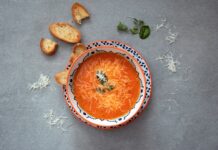



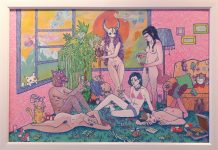
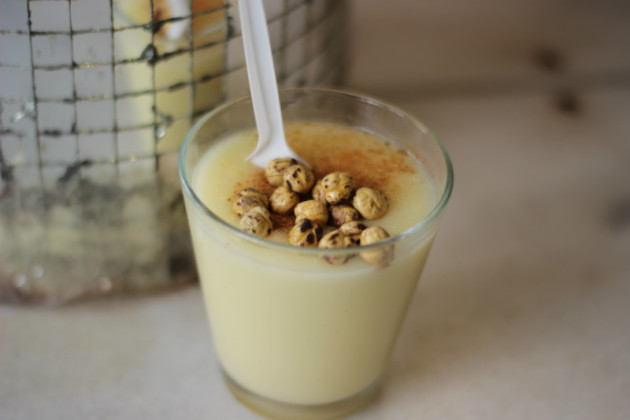
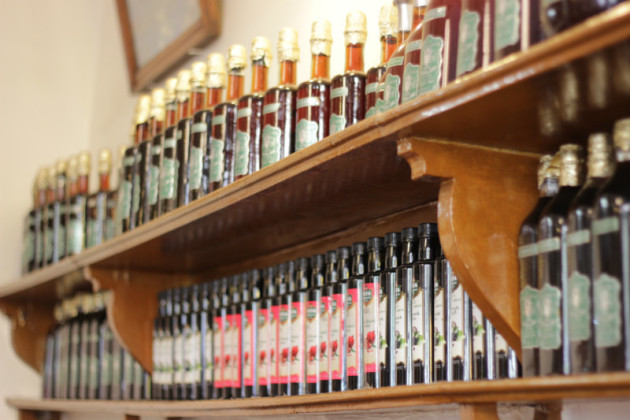
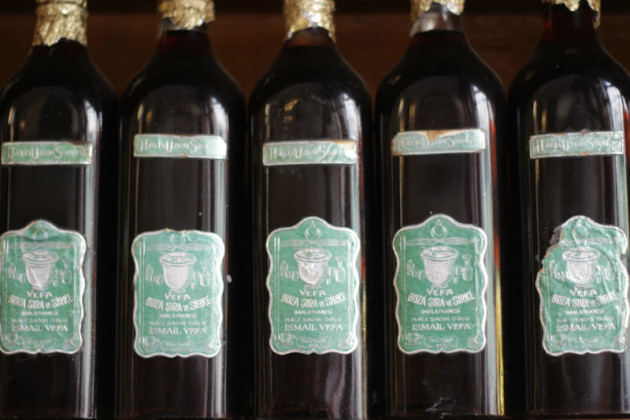
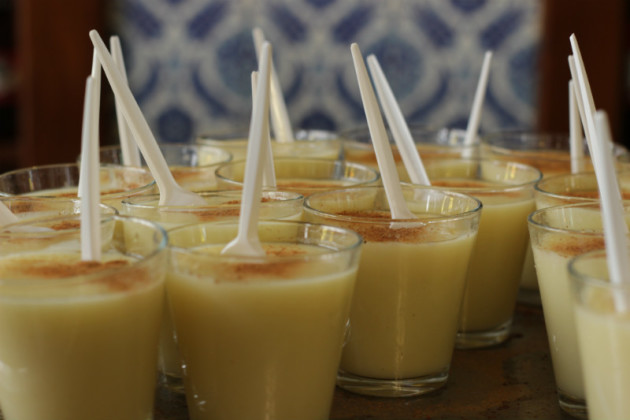
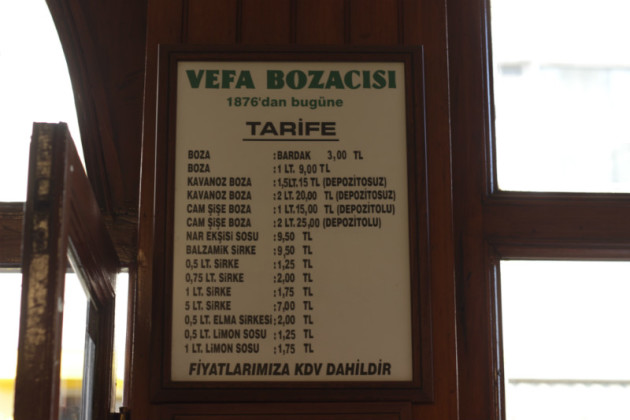
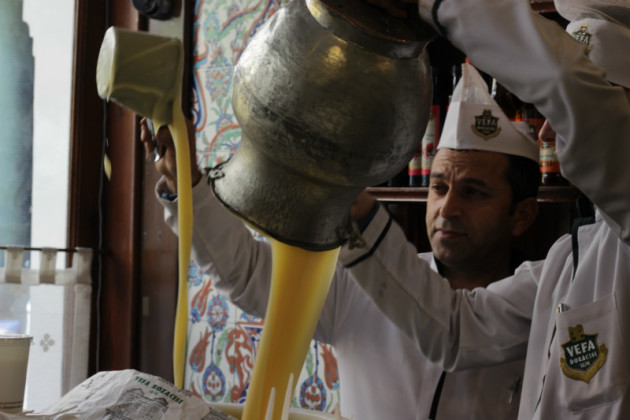
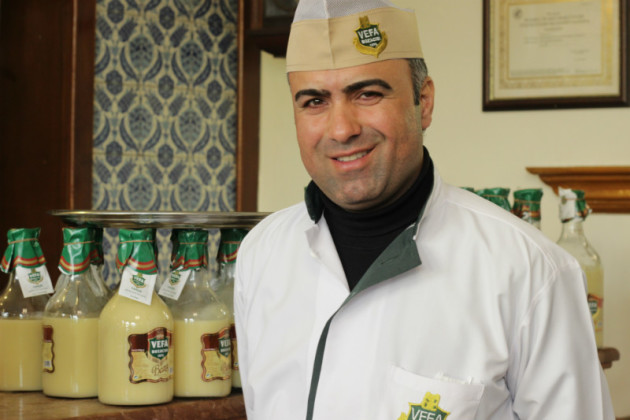
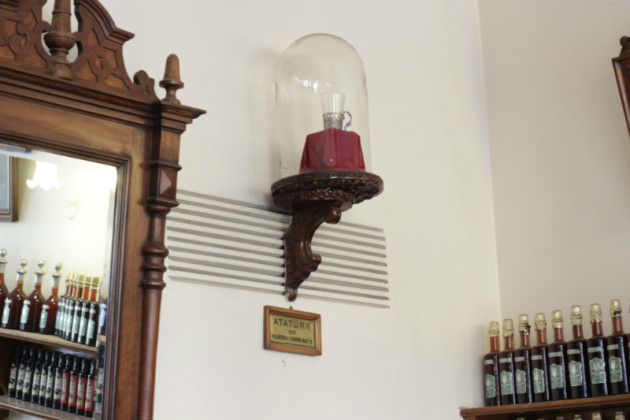
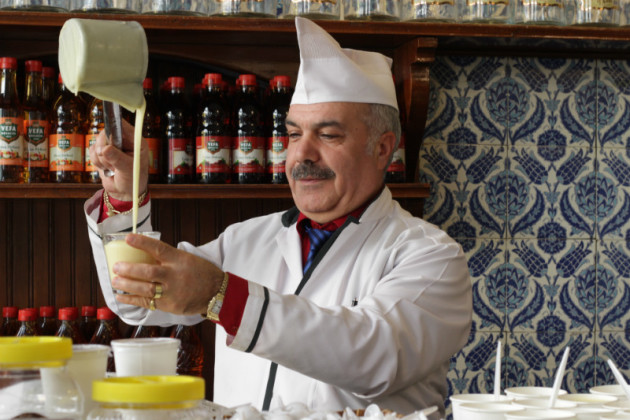
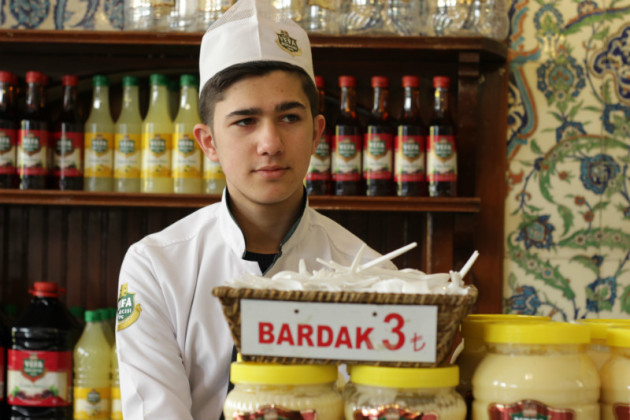
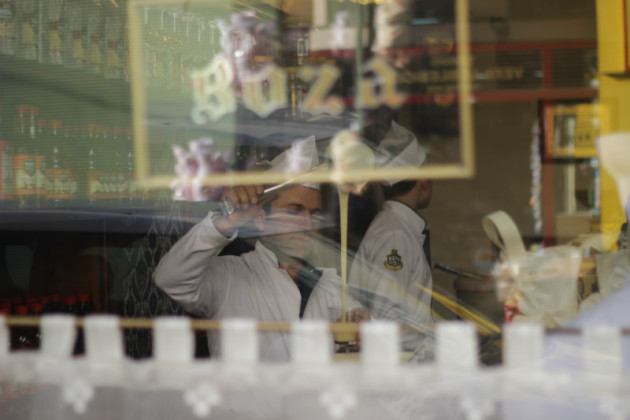


[…] A version of this article appears on yabangee.com […]